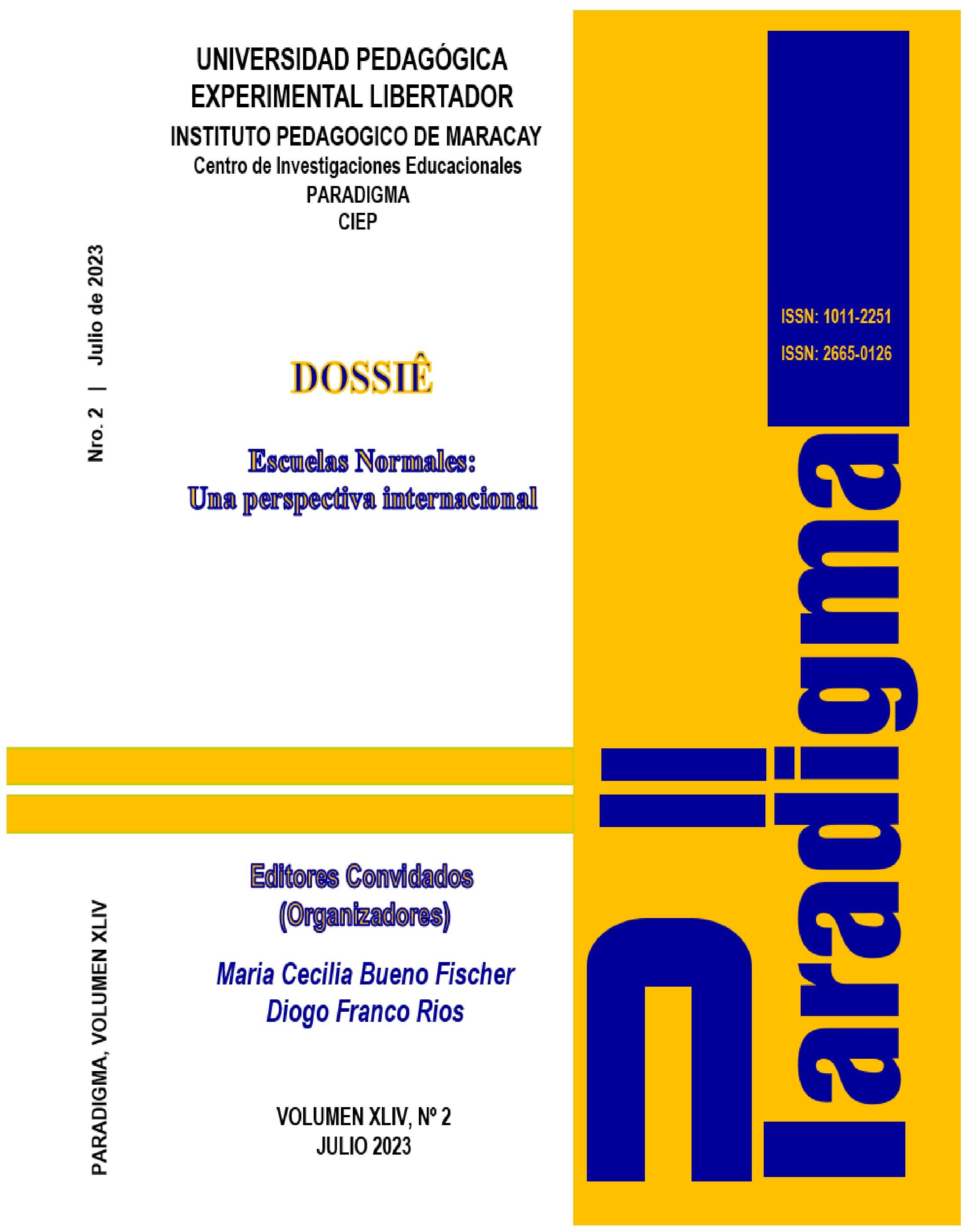Desarrollo de la capacidad de observación profesional de los futuros maestros de matemáticas
DOI:
10.37618/PARADIGMA.1011-2251.2023.p354-373.id1319Keywords:
Futuros maestros de matemáticas; Observación en el salón de clases; Aproximación a la prácticaAbstract
Se investigó cómo las actividades de un curso de métodos de enseñanza de las matemáticas, combinadas con experiencias de campo, ayudan a fortalecer la capacidad de observación profesional de los futuros maestros de matemáticas. Los participantes estudiaron aspectos teóricos sobre el desarrollo de la proficiencia matemática y posteriormente observaron cómo se manifestaron en las clases de sus maestros cooperadores. Utilizaron tres formularios de observación para reportar las acciones de los maestros que desarrollan comprensión matemática, fluidez de los procesos y competencia estratégica (Kilpatrick et al., 2001). Los hallazgos indican que mejoraron suDownloads
References
Amador, J. M., & Carter, I. S. (2016). Audible conversational affordances and constraints of verbalizing professional noticing during prospective teacher lesson study. Journal for Mathematics Teacher Education, 21, 5-34. http://doi.org/10.1007/s10857-016-9347-x
Bakeman, R., & Gottman, J. M. (1989). Observación de la interacción: Introducción al análisis secuencial. Morata.
Ball, D. L., Thames, M. H., & Phelps, G. (2008). Content knowledge for teaching: What makes it special? Journal of Teacher Education, 59(5), 389-407. https://doi.org/10.1177/0022487108324554
Blomberg, G., Stürmer, K., & Seidel, T. (2011). How pre-service teachers observe teaching on video: Effects of viewers’ teaching subjects and the subject of the video. Teaching and Teacher Education, 27(7), 1131-1140. https://doi.org/10.1016/j.tate.2011.04.008
Creswell, J. W. (2012). Educational research, planning, conducting and evaluating quantitative and qualitative research. (4th ed.). Pearson.
Dorsch, F. (1985). Diccionario de psicología. Editorial Herder.
Fraenkel, J., Wallen, N., & Hyun, H. H. (2012). How to design and evaluate research in education (8th ed.). McGraw Hill.
Gleason, J., Livers, S. D., & Zelkowski, J. (2015). Mathematics classroom observation protocol for practices: Descriptors manual. Recuperado de http://jgleason.people.ua.edu/mcop2.html
Grossman, P., Compton, C., Igra, D., Ronfeldt, E. Shahan, E., & Williamson, P. (2009). Teaching practice: A cross-professional perspective. Teachers College Record, 111(9), 2055-2100. https://doi.org/10.1177/016146810911100905
Hammerness, K., Darling-Hammond, L., Grossman, P., Rust, F., & Shulman, L. (2005). The design of teacher education programs. In L. Darling-Hammond and J. Bransford (Eds.), Preparing teachers for a changing world: What teachers should learn and be able to do (pp. 390-441).
Jackson, B., Rice, L., & Noblet, K. (2011). What do we see? Real time assessment of middle and secondary teachers’ pedagogical content knowledge. En S. Brown, S., Larsen, K. Marrongelle, & M. Oehrtman (Eds.), Proceedings of the 14th Annual Conference on Research in Undergraduate Mathematics Education, Vol. 4, pp 103-108. Portland, Oregon. http://sigmaa.maa.org/rume/RUME_XIV_Proceedings_Volume_4.pdf
Kilpatrick, J., Swafford, J., & Findell, B. (Eds). (2001). Adding it Up: Helping Children Learn Mathematics. National Academy Press.
Koehler, M. J., & Mishra, P. (2009). What is technological pedagogical content knowledge? Contemporary Issues in Technology and Teacher Education, 9(1), 60-70. https://www.learntechlib.org/primary/p/29544/
Matthews, M. E., Hlas, C. S., & Finken, T. M. (2009). Using lesson study and four column lesson planning with preservice teachers. Mathematics Teacher, 102(7), 504-508. https://doi.org/10.5951/MT.102.7.0504
Sawada, D., Piburn, M. D., Judson, E., Turley, J., Falconer, K., Benford, R., & Bloom, I. (2002). Measuring reform practices in science and mathematics classrooms: The reformed teaching observation protocol. School Science & Mathematics, 102(6), 245-253. https://doi.org/10.1111/j.1949-8594.2002.tb17883.x
Seidel, T., & Stürmer, K. (2014). Modeling and measuring the structure of professional vision in preservice teachers. American Educational Research Journal, 51(4), 771-739. https://doi.org/10.3102%2F0002831214531321
Shulman, L. S. (1986). Those who understand: Knowledge growth in teaching. Educational researcher, 15(2), 4-14. https://doi.org/10.3102/0013189X015002004
van Es, E. A., & Sherin, M. G. (2002). Learning to notice: Scaffolding new teachers’ interpretations of classroom interactions. Journal of Technology and Teacher Education, 10(4), 571-596. https://www.researchgate.net/publication/252692170_Learning_to_Notice_Scaffolding_New_Teachers'_Interpretations_of_Classroom_Interactions
Zaragoza, A., Seidel, T., & Hiebert, J. (2021). Exploring preservice teachers’ abilities to connect professional knowledge with lesson planning and observation. European Journal of Teacher Education. https://doi.org/10.1080/02619768.2021.1996558
Downloads
Published
Métricas
Visualizações do artigo: 122 PDF (Español (España)) downloads: 60


 English
English
 Español (España)
Español (España)
 Français (France)
Français (France)
 Português (Brasil)
Português (Brasil)




















































